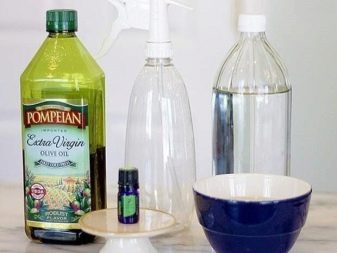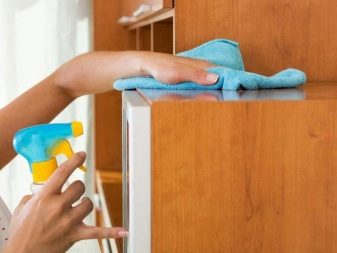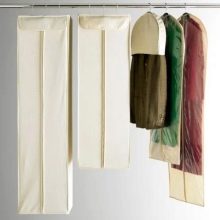All about cleaning dust

Dust is not only an aesthetic disadvantage, but it can also cause significant harm to others. You cannot get rid of it for a long time, but you can make the cleaning process much easier if you know how to properly organize the cleaning and what is needed for this.


How often do you need to clean?
Scientists have done a lot of research. As a result, we came to the conclusion that cleaning is recommended once a week. But this rule applies only to general cleaning. Dust cleaning in prominent places, arranging things, washing dishes should be done every day.

If you neglect these rules, then the likelihood of getting sick with acute respiratory viral infections or acute respiratory infections increases significantly, since even when airing, exhaust gases, dust from the ground and even sand particles get into the apartment, which cause not only allergies, but also provoke the development of oncology, as well as a significant reduction life.
Necessary devices and tools
To combat harmful particles, microbes, there are both traditional and modern methods.
Polish
Suitable for quick daily cleaning. The composition includes components that cover the surface with an additional layer that protects against dust accumulation for 2 days.

Antistatic agents
More suitable for wiping household appliances, electronics. Perfectly removes grease or handprints.

Solutions
There are several options for preparing the solution.
-
A glass of water (200 ml) mixed with 2 teaspoons of vinegar and sunflower oil, add a few drops of eucalyptus oil. Pour the contents into an empty spray bottle. Pleasant aroma, antibacterial effect of oils will help to prolong the freshness, purity of air in the apartment, keeping the effect for 4 days.


- Using fabric softener as a substitute for special detergents. There are a couple of teaspoons of conditioner per liter of water. Moisten a dry cloth with the solution and wipe all surfaces with it.

- Saline solution only suitable for use on light colored surfaces. Mix a teaspoon of rock salt with 250 ml of water, stir.

- A solution with citric acid removes plaque well. To do this, cut the lemon into small pieces, pour a tablespoon of vegetable oil, leave for about a week and a half. After that, pour a glass of hot water, strain through a gauze cloth. Rinse a cloth in cooled water, wipe dusty shelves, tables and even furniture with it.

Anti-dust sprays
This option is suitable for eliminating allergens. The substances contained in the composition prevent dry dirt from settling.

Glycerol
A cheap tool that allows you to quickly remove dirt from any surface. A few drops of the substance are applied on top of the previously wiped furniture and rubbed.

Impregnation
Designed for processing upholstered furniture. It is enough to use the product once every 3 months.

Wet wipes
It is recommended to use only special wipes designed for cleaning dusty surfaces. Suitable exclusively for wooden furniture.

Soft brushes
Practical for hard-to-reach areas for wiping small items. You need to update it once a month.

Old sock
Reusable budget option. Can be used as a mop cloth or fabric gloves. Rinse and treat thoroughly after each use.

Cardboard sleeve
In appearance, it is similar to the attachments in vacuum cleaners. Thanks to the properties of the cardboard from which the sleeve is made, it crumples perfectly. Suitable for cleaning the most inaccessible places.

Cleaning roller
Such a device can be used both for cleaning clothes and for cleaning soft surfaces. Cleaning is carried out from top to bottom.

Alcohol
To remove dust from lamps that do not respond well to conventional products and solutions, alcohol is the best option. It is enough to put it on a cotton pad and wipe the surface.

Microfiber
Otherwise - a cloth made of polymers, which collects dust effortlessly. This is an economical and efficient way.

Mitten
Fine microfiber. Acts like a microfiber cloth. The only difference is that the mitten should be changed every 2 years. Thorough cleaning and drying in a natural way is necessary after use.

How to wipe properly?
The attractive appearance of furniture and the apartment as a whole is lost over time. The correct sequence of cleaning and adherence to all recommendations will allow you to preserve the appearance, and will give the effect of novelty for a long time.

Stretch ceiling
To begin with, you should carry out dry cleaning, that is, walk with a vacuum cleaner at a distance of no more than 4 centimeters from the surface. Only then can you start wet cleaning.
To remove minor stains, you will need to wipe with a damp cloth. In the presence of larger contaminants, you can additionally moisten the cloth with a special solution or a solution prepared at home.

All actions must be performed very carefully, avoiding strong friction, hard sponges, brushes.
Windows and window sills
When cleaning windowsills, it is advised to use a traditional rag. It is enough to moisten it in warm water and walk on the contaminated surface. In case of severe contamination, solutions are additionally used.

Windows are cleared in the same way. The advantages of this cleaning are the absence of streaks.
After renovation
When entering an apartment or after a long period of time, people must carry out some kind of repair work. Accordingly, after that, a thick layer of dust accumulates in the house, which prevents a comfortable stay.

Cleaning the floor
It is necessary to start cleaning from the floor, since some of the dust will still accumulate at the top.
Sequencing:
- moisten the floor from a sprayer with running water;
- after an hour, go with a vacuum cleaner;
- wash the floor with periodic replacement of the rag.

Laminate and linoleum are cleaned with the addition of a saline solution. Wooden floors and parquet floors - with rubbing alcohol.
Cleaning the walls
This process is difficult for many. However, it is worth knowing just a few principles of quick cleaning:
- first, you should vacuum the wallpaper in 3-4 approaches;
- then wipe with a dry cloth;
- walk with a damp cloth, if the wallpaper is made of washable material, you can add a little soap solution.


Due to the procedure, a significant amount of dust can accumulate in the air, so you need to protect yourself in advance.
Cleaning of furniture and other interiors
Cleaning of covers from sofas, armchairs, stools is carried out by washing in a washing machine. If there is no possibility, then the upholstery is slightly moistened, after drying, they are passed through with a vacuum cleaner, and then the remaining dust is knocked out. If this does not help, contact the dry cleaner.


Hard surfaces are wiped with a dry and then damp cloth using sprays and solutions. Coating with polish is allowed.
A soap solution will help remove dust from plastic inserts.


Useful Tips
If you don't want to spend a lot of time on cleaning, or spend it more often than it should be, there are some useful tips to apply.
- Cleaning is best done in the morning, as the body will be less resistant to harmful microorganisms in the evening, and the risk of allergies and other diseases will increase significantly.
- So that the process does not seem heavy and lengthy, it is recommended to include your favorite music or movie in the background.
- Taking an inventory of unwanted items is a great way to get rid of additional sources of dust accumulation. Feather pillows can be replaced with padding polyester, statuettes and long-forgotten souvenirs can be given away or put away in a closed cabinet, soft toys can be given away, washed, put in the freezer or on the balcony during the cold season.
- Items in the wardrobe that are not suitable for the season should be vacuum packed. It is important to wash your outdoor clothes regularly.
- To keep dust off tall cabinets, refrigerators, and other pieces of furniture, lay a newspaper or magazine.
- Maintaining moisture is important when dealing with dust build-up.
- Curtains collect a lot of pathogenic bacteria, so you need to vacuum them regularly.
- Watering your plants regularly in your home will provide clean air.
- It is necessary to clean the hoods and filters at least 2 times a month.
- During the planned repairs, the furniture is wrapped with construction film, and the interior doors are closed from below with a damp cloth.



For information on how to reduce the amount of dust in your home, see the next video.








